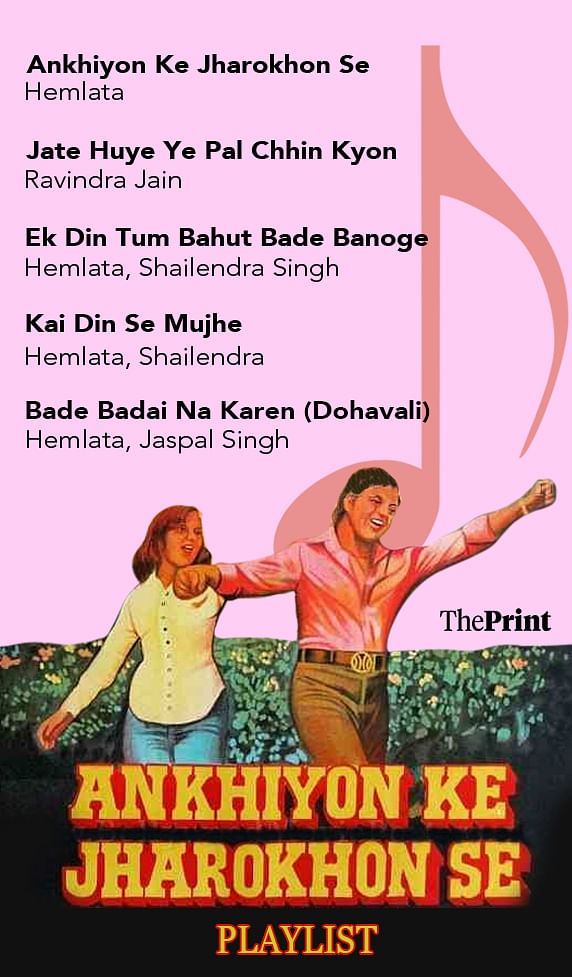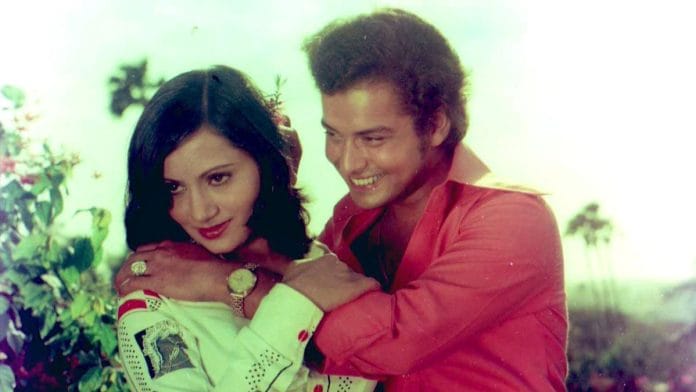Erich Segal’s evergreen novel Love Story and its movie adaptation from the 1970s have inspired multiple Indian directors over the years. There’s Madanolsavam in 1978, 2003’s Khwahish, 2008’s Love and Sanam Teri Kasam in 2016. But one of the earliest Bollywood adaptations is Hiren Nag’s Ankhiyon Ke Jharokhon Se.
The 1978 film was a box office success, and one of the top grossers of the year, even though it was not headlined by big names. Hindi cinema fans love a good tragedy.
The core of Ankhiyon Ke Jharokhon Se is taken from Segal’s heartbreaking tale—Arun Mathur (played by Sachin Pilgaonkar) and Lily Fernandes (Ranjeeta Kaur) meet in college, overcome their initial misgivings about each other, fall in love, and get married. But there is no happily ever after. Lily is diagnosed with leukaemia.
But that’s where the similarities with Segal’s book end. In typical Rajshri Productions style, the parents are not villains and finally accept their children’s decision to marry each other without too much resistance or melodrama. In fact, everyone’s a little too good to be real.
But the movie works without being sappy—buoyed by the lead actors’ performances and the music. It’s a tender, bittersweet love story that tugs at the heartstrings.
Also read: ‘Mashaal’ mixed news media with melodrama. It made Anil Kapoor an ‘A-grade hero’
Only one villain
The cherubic Arun Mathur is an entitled college student. The son of a wealthy lawyer, he cannot accept that Lily Fernandes, the daughter of a nurse, outperforms him in class. But from rivals to frenemies, the two fall in love.
What’s interesting is that despite the obvious class difference, they meet each other on equal footing.
Sachin Pilgaonkar was the original chocolate boy, who successfully made the transition from child actor to a leading man. Rajshri Productions, known for their family-oriented stories, gave him a hand up in the 1970s and 80s. Apart from Ankhiyon Ke Jharokhon Se, he also played the lead in other productions like Geet Gaata Chal (1975) and Nadiya Ke Paar (1982).
But his role in Ankhiyon Ke Jharokhon Se stands out for the growth of his character, evolving from an entitled scion to a supportive boyfriend. It’s an earlier version of the ‘men written by woman’ trope that is popular now.

Ranjeeta’s character is shown as assertive, but without being aggressive. She is the ideal ‘good girl’—sweet, sensitive and studious. A model for the kind of characters that Rajshri Productions also relied on later—from Hum Saath Saath Hain (1996) to Vivaah (2006).
It followed a long line of Hindu-Christian love stories—Bobby (1973), Julie (1975), and even Amar Akbar Anthony (1977). But it steers clear of the traditional Bollywood stereotype of the Christian woman who goes on dates and loves to party. Lily is shown as an intelligent, studious and ambitious woman, who would have carved out a career path for herself had she lived. She stands in contrast to Segal’s Jennifer. She is just as studious but gives up her love of music to become a school teacher to support her boyfriend’s pursuit of a law career.
A key difference is that in Ankhiyon Ke Jharokhon Se, unlike in Love Story, Arun’s father is extremely supportive of the relationship. There is truly no ‘villain’ except for leukaemia.
The 1978 film is also reminiscent of Nicholas Sparks novels and their adaptations—A Walk to Remember (2002) and The Notebook (2004)—which were about diseases that came in the way of love stories.
Also read: ‘Julie’ tackled pre-marital sex and pregnancy sensitively. It still fell prey to stereotypes
Soundtrack for teenage love
Ankhiyon Ke Jharokhon Se’s soundtrack is not an aside but adds another layer of pathos to the plot. The title track, composed by Ravindra Jain and sung by Hemlata, was extremely popular. The lyrics and music are the perfect backdrop for the kind of hopeful love that teenagers experience, but its haunting notes give an inkling of the tragedy that will befall the couple. It is also a significantly long track, with a total time of 7 minutes and 20 seconds.
Couplets by Kabir and Rahim, also feature in the movie when Lily and Arun compete in a recital competition. And true to her character, Lily knows all the couplets. All this unfolds through the song, Bade Badai Na Kare, inspired by the dohas.
The music clinched nominations in three categories at the 26th Filmfare Awards—Best Music Director and Best Lyricist for Ravindra Jain, and Best Female Playback Singer for Hemlata for the title track.
Rajshri Productions even made a sequel Jaana Pehchana (2011), like Segal did with his film Oliver’s Story (1978). The fate of both sequels was the same–it could not recreate the magic of the original.
(Edited by Theres Sudeep)






